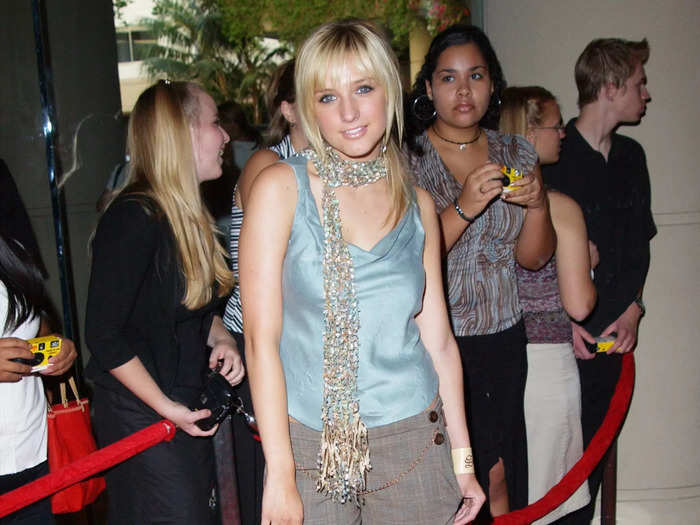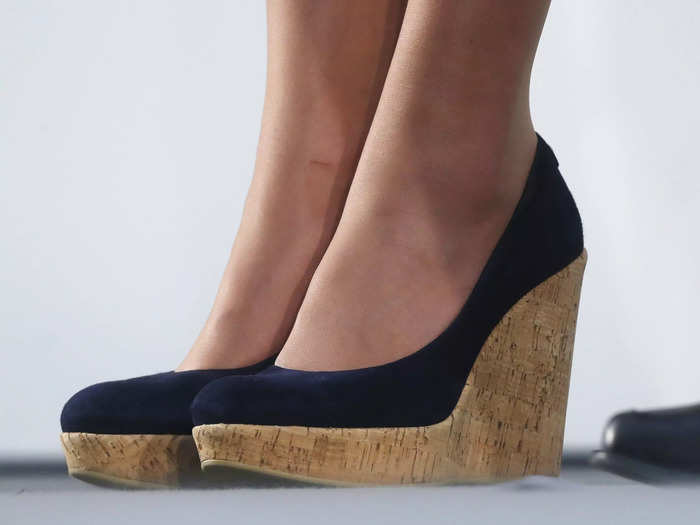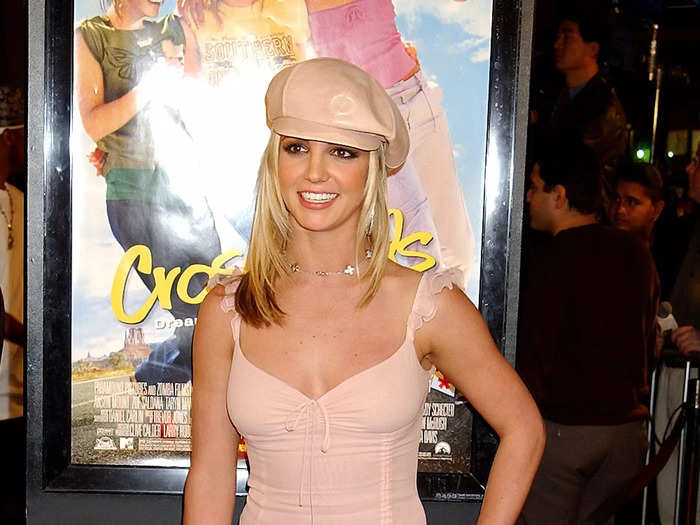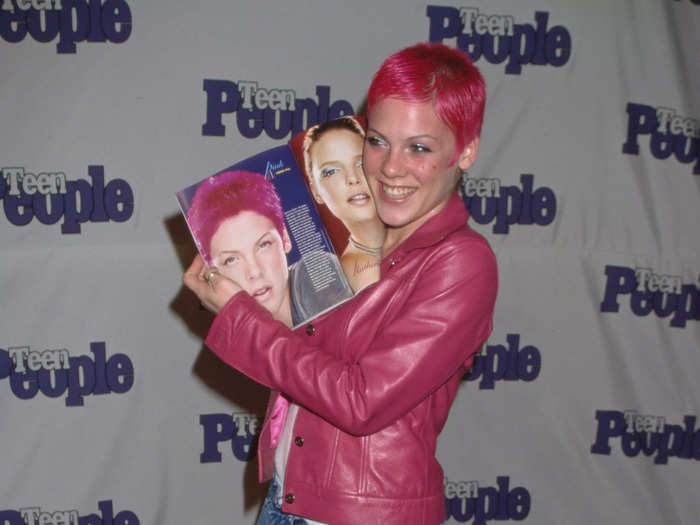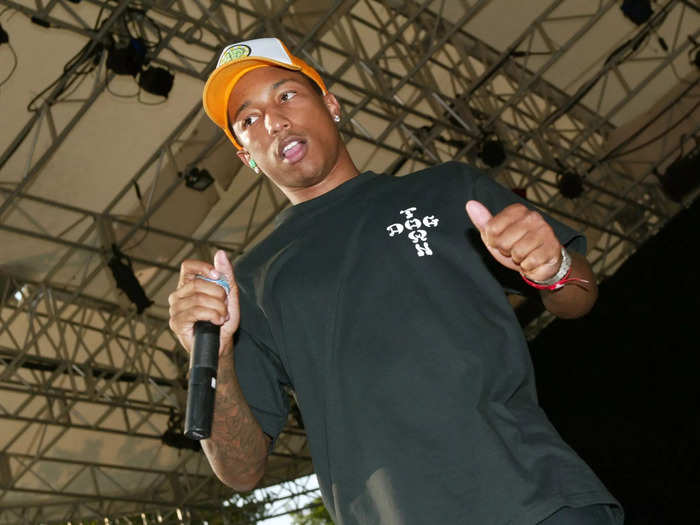Stylists told BI which Y2K trends shouldn't come back.CBS Photo Archive/CBS via Getty Images
- Y2K fashion trends have gained traction on social media in recent years, especially among Gen Z.
- But not all trends from the early aughts deserve a resurgence.
In times of uncertainty, there's something to be said for the power of nostalgia.
"Nostalgia is a refuge, as people turn to the feelings of comfort, security, and love they enjoyed in their past," Krystine Batcho, a psychologist and professor at Le Moyne College, told Business Insider in 2022.
However, Gen Z's relationship with the concept is unique. They're nostalgic for a time they barely remember, or don't remember at all: the early 2000s.
That's led to some interesting interpretations as they aim to replicate Y2K — Year 2000 — fashion.
Fashion stylist Payton Dale told BI that members of Gen Z are looking to Vogue, Y2K movies, and other "over-the-top things" to determine what fashion was like, and mistakenly using them as their guide.
BI spoke with Dale, as well as fashion stylists Maiya Simone and Turner Allen, to learn which Y2K trends are better left in school yearbooks, moms' Facebook archives, and "Mean Girls."
Here's what they said.
Skinny scarves were an unnecessary 2000s accessory.
A stylist told BI she's not a fan of "scarves when they're just unnecessarily there." Jon Kopaloff/Contributor/FilmMagic/Getty Images
Before infinity scarves took over Pinterest boards and Tumblr pages, it was the skinny scarf that dominated fashion … weather be damned.
Simone said she's not a fan of "scarves when they're just unnecessarily there," such as a scarf paired with a tank top and mini shorts.
"Why do you have on a scarf? It's not practical for the look. It did not need to be there at all," she said.
In April 2023, Ashlee Simpson reflected on her look, pictured above, which she wore to the 2003 Family Television Awards.
"The scarf makes me crack up — it was such a thing at that time. Why were we all wearing a scarf with everything ?!" she told Page Six Style. "There's a point when you really need to lose a piece, you know? There's a lot going on."
Cork wedge heels can stay in the past.
Kate Middleton wore cork wedge heels in 2012. Danny Lawson - Pool/Getty Images
Simone said another Y2K trend to leave in the past is cork wedge heels.
"I'm fine with the wedge," she said. "They have been brought back and made and designed in different, unique ways that I think are cool, and so are platform heels. I have no issue with those, but it's just that cork material."
Salvatore Ferragamo is widely credited with having invented the cork wedge heel in the late 1930s. According to Arizona State University's FIDM Museum Collection, "Ferragamo believed that cork had the added benefit of making 'the feet feel as if they are riding on a cushion.'"
Do we really need to re-do dresses over jeans?
Britney Spears, Anne Hathaway, and Jessica Alba all took part in the dresses over jeans trend in the early 2000s. Gregg DeGuire/Contributor/WireImage/Getty Images
The dress-over-jeans look was a red-carpet staple in the early aughts thanks to stars like Britney Spears, Anne Hathaway, and Jessica Alba.
But while Simone conceded that there is a modern, chic way to nail the look, she's not a fan, "particularly when it's like all one silhouette," citing the example of a long, tight-fitted camisole with equally tight-fitting jeans or capris.
"It's like the proportions just are not it, and then usually that's coupled with a wide statement belt that sits on the hips, so everything feels really long and weird, and it never looks good on anyone's body, in my opinion," she said.
Overly distressed denim has had its moment.
A stylist told BI he's not a fan of super distressed denim. Vinnie Zuffante/Stringer/Getty Images
Allen told BI he's not a fan of overly distressed jeans, recalling how his peers in middle and high school would participate in a trend of having their jeans be too long so the bottoms would become dirty and ripped.
"Then that would kind of continue up around the knees and the thighs to the point where you could nearly see someone's entire leg through all the holes," he said.
Allen added that he thinks the trend was driven by mall brands that leaned into the "super distressed style," but he can't imagine it gaining popularity in the same way now.
There's no need to combine every Y2K trend into one outfit.
Stylists told BI they don't like when Y2K trends are combined into one outfit. Rachpoot/Bauer-Griffin/Contributor/GC Images/Getty Images
Dale cited the example of seeing someone wearing low-rise jeans with ballet flats, an oversized jersey, a bucket hat, a pink furry bag, and designs with cow prints and glitter.
"The glitter was the Spice Girls. The low-rise pants were LL Cool J. The oversized thing was 98 Degrees [...] and they're just pulling from all these different places with no cohesion, and then they're trying to tell us that it's new," Dale said.
Simone said she, too, prefers the items when worn alone.
"Maybe you just have a baggy jean — that's a Y2K thing — but it's not like a baggy jean and cork heels and a little baby tee," she said.
"When you have all of these Y2K elements just like boom, boom, boom, all in one outfit; I think that's just entirely a big, big no," she added.
Against the odds, trucker hats are having a resurgence.
Pharrell, Paris Hilton, and Ashton Kutcher were known for wearing trucker hats in the early 2000s. Scott Gries/Staff/ImageDirect/Getty Images
Though Dale told BI, "No one has ever looked better in a trucker hat," the accessory has become increasingly popular in recent years as Von Dutch, a brand whose trucker hats were ubiquitous in the early 2000s, mounts a comeback with the support of celebrities like Megan Thee Stallion, Emma Chamberlain, and Travis Scott.
At its height in 2003, Von Dutch had more than $33 million in annual sales, per Business of Fashion.
In July 2024, the outlet reported that Von Dutch was acquired by White Space Group (WSG), a brand management company.
Marc Benitez, WSG Brands' chief operating officer, told Business of Fashion that Von Dutch has "the cultural relevance, global brand awareness and the ability to be licensable," adding, "Now you have the opportunity to capitalize on who remembers it from the early 2000s, and bring it to the young consumers interested in that timeframe now."
And he's not just thinking about short-term profitability.
"We intend on this brand having staying power, we're not just focused on a specific time-sensitive movement. But we're capitalizing on that time-sensitive opportunity," Benitez said.

